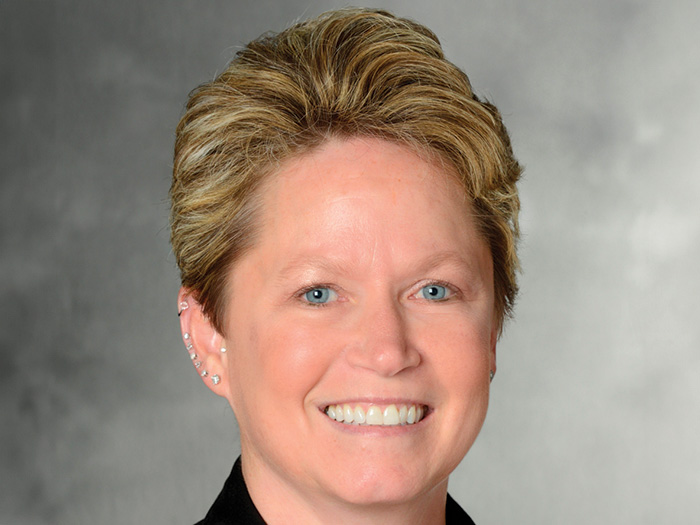Sponsored: Hiscox Insurance
Ageism in the Workplace

The American workforce is graying. By 2024, workers aged 55 and older will represent 25% of the nation’s workforce. The fastest annual growth rates will be among those workers who are aged 65 and older, according to the U.S. Bureau of Labor Statistics.
Employees may benefit from the experience of workers who have “seen it all” from economic ups and downs to the evolution of technology. For employees, it means a longer career of meaningful work and the challenges and rewards that accompany it. It may also mean more discrimination based on age, and the risks that entails.
Age Discrimination Defined
The Equal Employment Opportunity Commission (EEOC) defines age discrimination as treating an applicant or employee less favorably because of his or her age.
This is a violation of the Age Discrimination in Employment Act (ADEA) that outlaws harassment based on age. Harassment, according to the EEOC definition, is conduct that is offensive and unwelcome and creates a hostile work environment or must be endured as a condition of continued employment.
Age Discrimination Is Common, Yet Underreported

The 2019 Hiscox Ageism in the Workplace Study™ found that 44% of the 400 workers aged 40 and older who responded to the survey said that they or someone they know experienced age discrimination in the workplace. Twenty-one percent indicated they had personally been discriminated against.
The number of age discrimination complaints by those aged 65 and over doubled from 1990 to 2017, with 18,376 cases filed in 2017. Yet it is believed that just 40% of cases of age discrimination are reported and that less than half (48%) of such employees filed a complaint with a state or local agency or the EEOC.
The majority (54%) of those respondents who contend that they were discriminated against, but did not file a complaint, were afraid of creating a hostile work environment — in other words, they didn’t want to “rock the boat.” Those who witnessed age discrimination at work had a similar concern, with 62% of witnesses citing fear of retaliation as the reason for not reporting what they saw.
What Older Workers Think
Workers aged 40 and up identified these myths about older workers:
- They are resistant to change and have trouble learning new skills
- They don’t like or understand technology
- Younger workers are cheaper — those over 40 are too highly compensated to retain
- They are complacent or unmotivated
- They are difficult to manage
The Costs of Workplace Ageism

Patrick Mitchell, Management Liability Product Head, Hiscox
“Age discrimination in the workplace comes with costs to both the employer and the employee,” said Patrick Mitchell, Management Liability Product Head at Hiscox.
“Companies suffer declines in employee motivation, which can result in decreased productivity and reductions in the quality of work. The loss of talent due to experienced workers being pushed out or leaving due to a hostile environment represents a cost to businesses, as does the opportunity that is missed when a more experienced and dedicated candidate is passed over in favor of someone younger.”
Older workers who face personal costs when ageism is allowed to persist said their career trajectory had been impacted due to their age. A startling 43% said they had left a company due to age discrimination they either witnessed or experienced personally.
The prevalence of age discrimination impacts the career mobility of older workers. Fifty-nine percent of study respondents aged 40 and above believe they won’t get a new job because of their age.
Of those in their prime earning years, aged 40 to 49, the number was nearly half (47%). The problem seems to be worse as you go up the corporate ladder — 62% of those at the middle management level or higher said they thought age would prevent them from getting a new job.
When older workers are forced to leave a job, they typically experience the longest period of unemployment of any age group, according to the EEOC. If and when they do get another job, they’re likely to take a significant pay cut.
Many of the costs to businesses and employees that are associated with ageism can be difficult to quantify, but here’s one that’s not: During the period from 2010 to 2018, employers paid $80.4 million to settle age discrimination charges that were filed with the EEOC, excluding litigation costs.
How Businesses Can Protect Against Ageism
To combat ageism in the workplace, Mitchell suggests that companies take a three-pronged approach:
- Prevent discrimination by educating your workforce. Training helps employees recognize when they may be unaware that they are discriminating and may encourage those who witness ageism to report it. It also sends the message to all employees that ageism will not be tolerated and, if it does occur, will be dealt with appropriately.
- Detect ageism when it occurs, addressing the problem before it impacts the company culture. Employers should be watchful that older workers are not harassed, underrepresented on team projects or in hiring or promotion decisions, or disproportionally affected by job terminations. Conducting periodic, anonymous surveys of all employees can help gauge whether these efforts are successful at keeping ageism in check.
- Mitigate the effects of ageism if it does occur. Reports of age discrimination should be quickly and thoroughly investigated, and any findings should be immediately addressed. Liability insurance for employment matters can protect the company and its officers in the event a lawsuit or a charge is filed with the EEOC or a local agency.
“With 67% of workers surveyed saying they plan to continue working after they reach age 66, and low unemployment forcing employers to compete for fewer available employees, companies would do well to consider how to make these experienced workers feel more valued,” said Mitchell.
“Eliminating ageism in their workplace is a good place to start.”
Hiscox is a global specialist insurer, headquartered in Bermuda and listed on the London Stock Exchange (LSE:HSX). Through its retail businesses in the UK, Europe, and the US, Hiscox offers a range of specialist insurance for professionals and business customers. The contents of this article does not offer legal or business advice related to the needs of any specific business. The 2019 Hiscox Ageism in the Workplace Study was conducted by Wakefield Research among 400 adults employed full-time using an email invitation and online survey. For more information please visit www.hiscox.com.
This article was produced by the R&I Brand Studio, a unit of the advertising department of Risk & Insurance, in collaboration with Hiscox Insurance. The editorial staff of Risk & Insurance had no role in its preparation.










